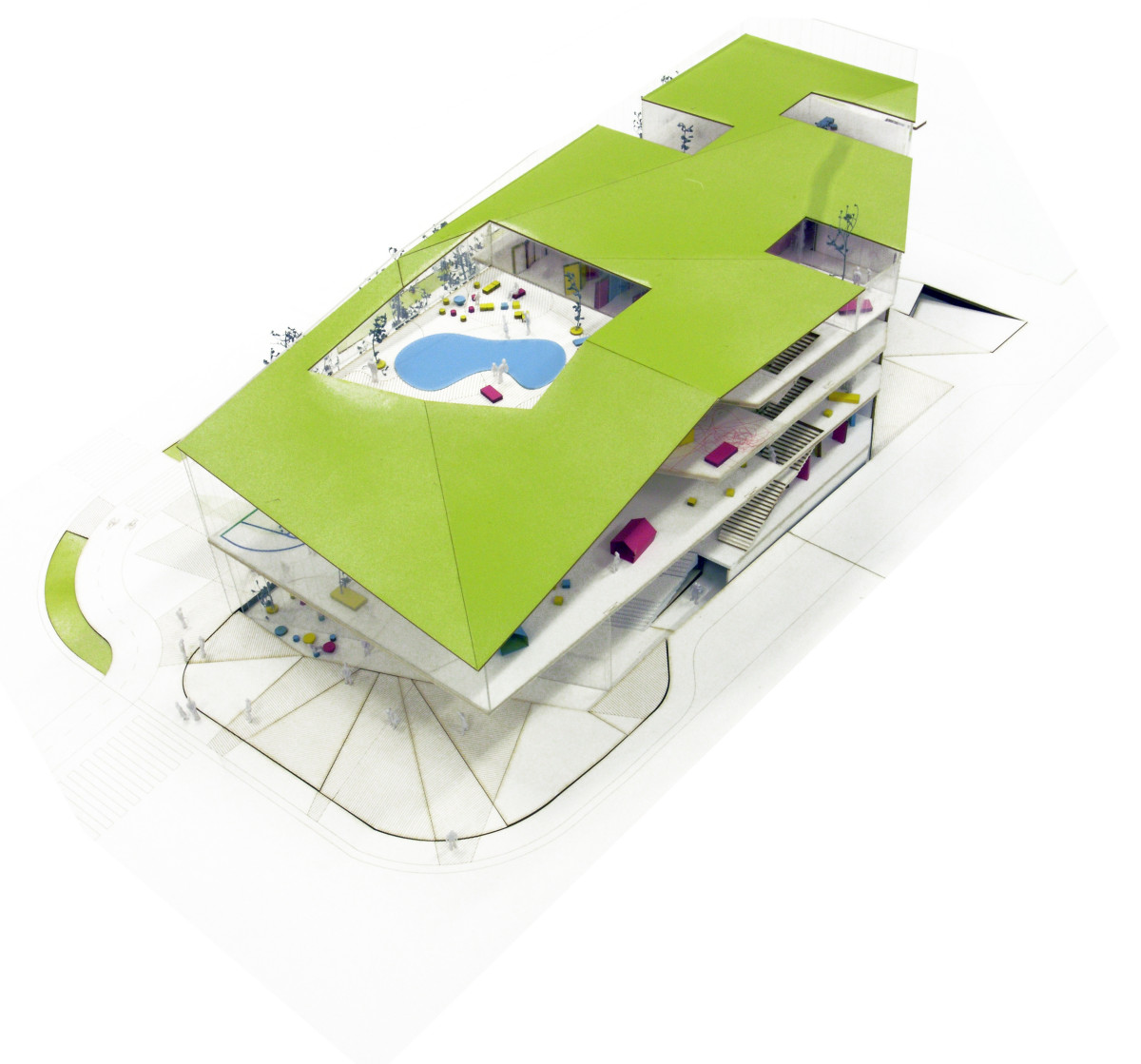
‘Kadr’ Culture Centre
Design: 2009
Client: The Warsaw Municipal Goverment, competition
Location: Warsaw
Team: Marcin Mostafa, Natalia Paszkowska, Iwona Borkowska, Maciej Burdalski, Artur Gosk, Anna Zawadzka
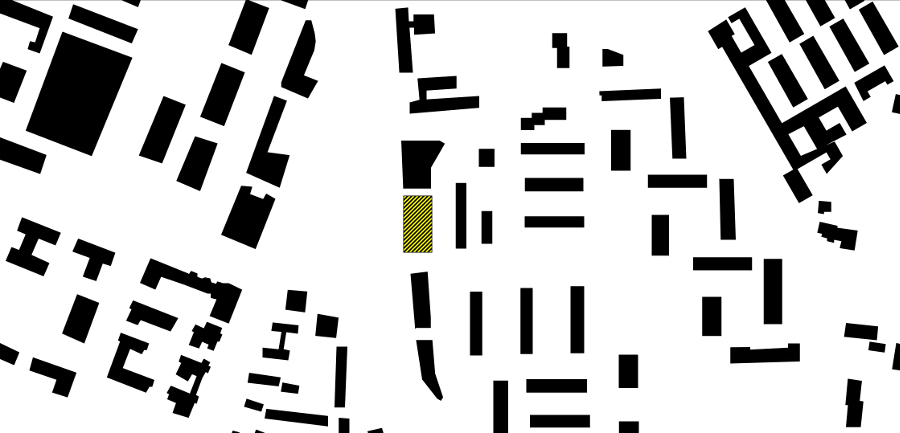
The allotment is situated directly in Rzymowskiego Street, which is one of the main traffic arteries in Mokotów district of Warsaw. Taking into consideration the Warsaw Development Plan, it has to be said that the designed object faces not a very interesting future – it will be situated directly next to the planned motorway, fenced and shut out by the wall of accoustic screens. The existing street space, which consists of a wide pavement isolated from motor traffic by a strip of tall greenery and a bicyle path running along the whole length of the street, will disappear as well. The present design tries to bring together the stipulations of the Plan with the attempts for improving the quality of public space surrounding the object. The preservation of the green strip and the bicycle path together with the introduction of appropriate architectural-constructional solutions into the designed facade will minimalize the necessity of using accoustic screens.
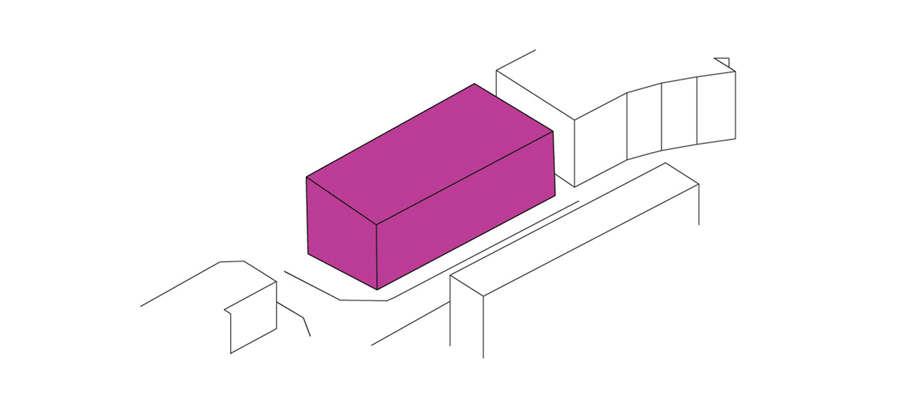
All in all, there is no chance to escape from reality, which is, and will be, a very busy and noisy street – the location of the Cultural Centre. This disadvantage determined the decision to move a central point of the designed entrance square towards the inner part of the settlement, in the direction of an existing pedestrian way. This is an attractive and functional space, albeit somewhat neglected, which in a natural way leads the settlement dwellers to the entrance, underlying the local range of activities in the object and combining it with such functions as a primary school, a library, a kindergarten and sports facilities.
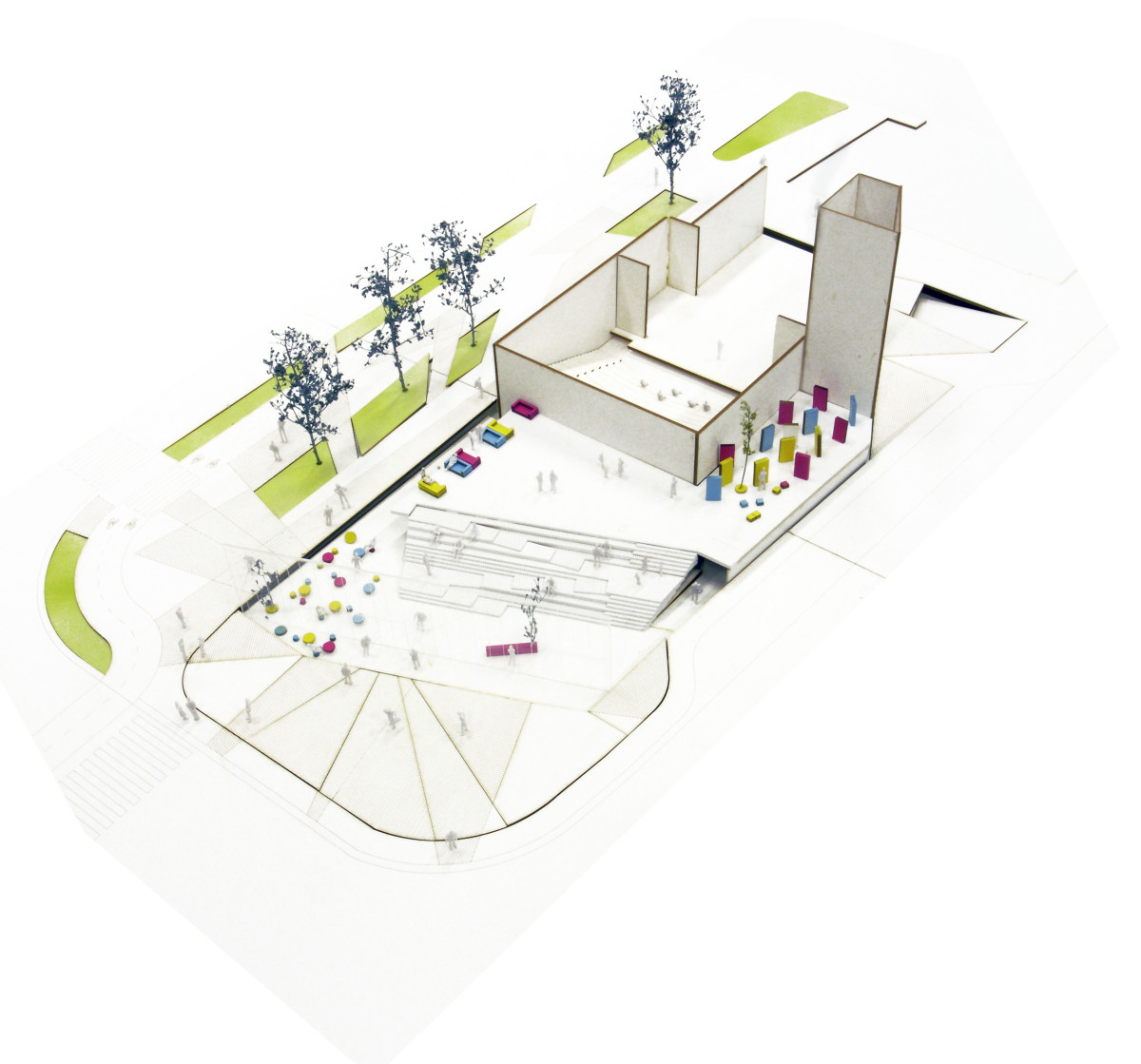
The designed entrance square is likely to become a completely new, widely available public space in this neighbourhood. Wooden flooring gradually descending towards the entrance, a truss giving a shelter from rain, a fully glazed entrance wall, all contribute to the attractiveness of the place. In warm seasons a cafeteria spills out into the square and wooden stairs make a friendly place for meetings and spending relaxed time. Creating such a space seems to be of immense importance considering the vicinity of a shopping mall, one of the most popular among young people, the Mokotów Gallery. Naturally, the Cultural Centre has to compete with the gallery, also by showing in a very determined way the distinctiveness of its offer, its space and consequently the quality of time spent on its premises.
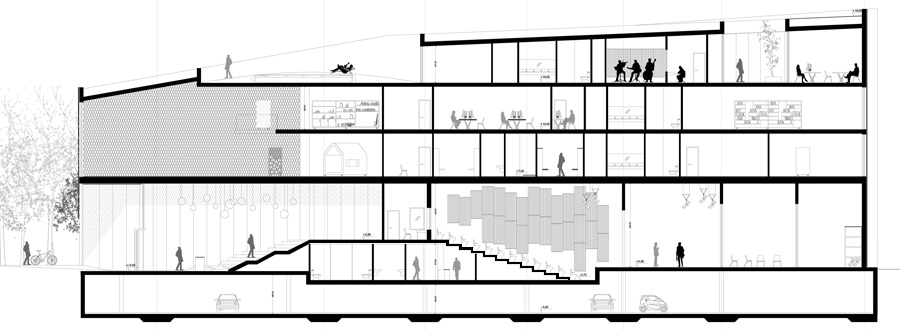
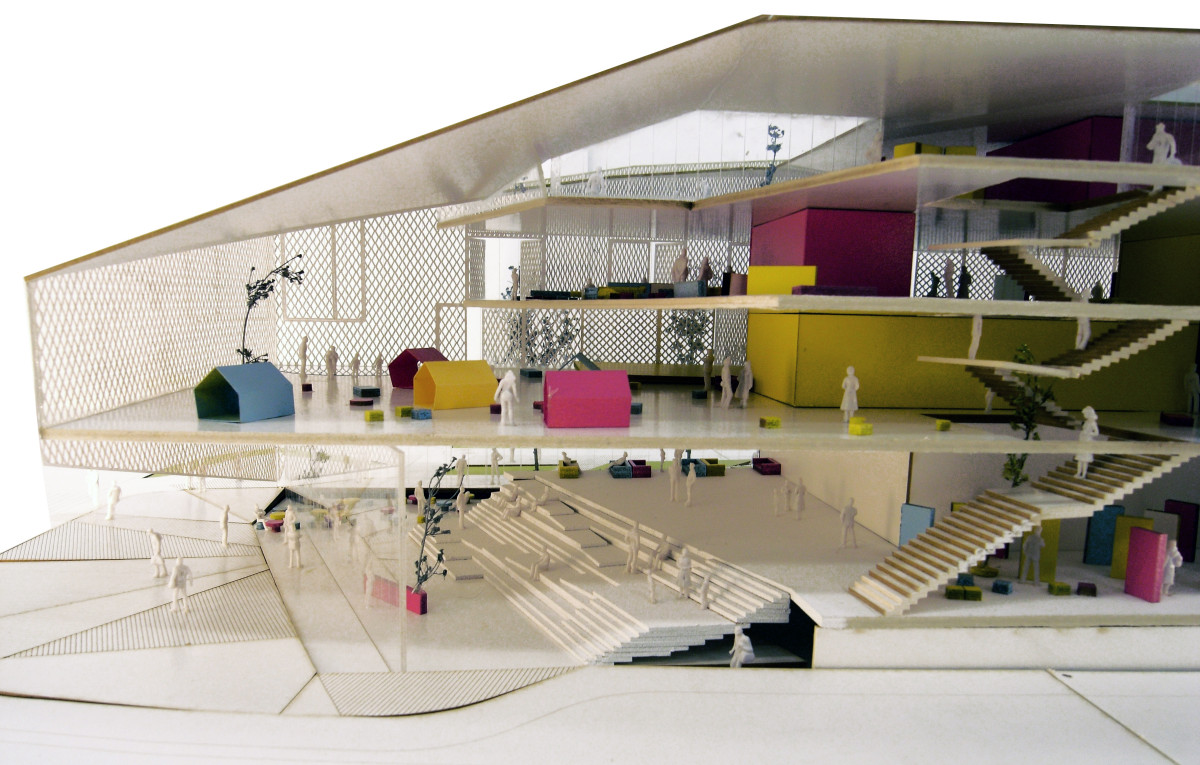
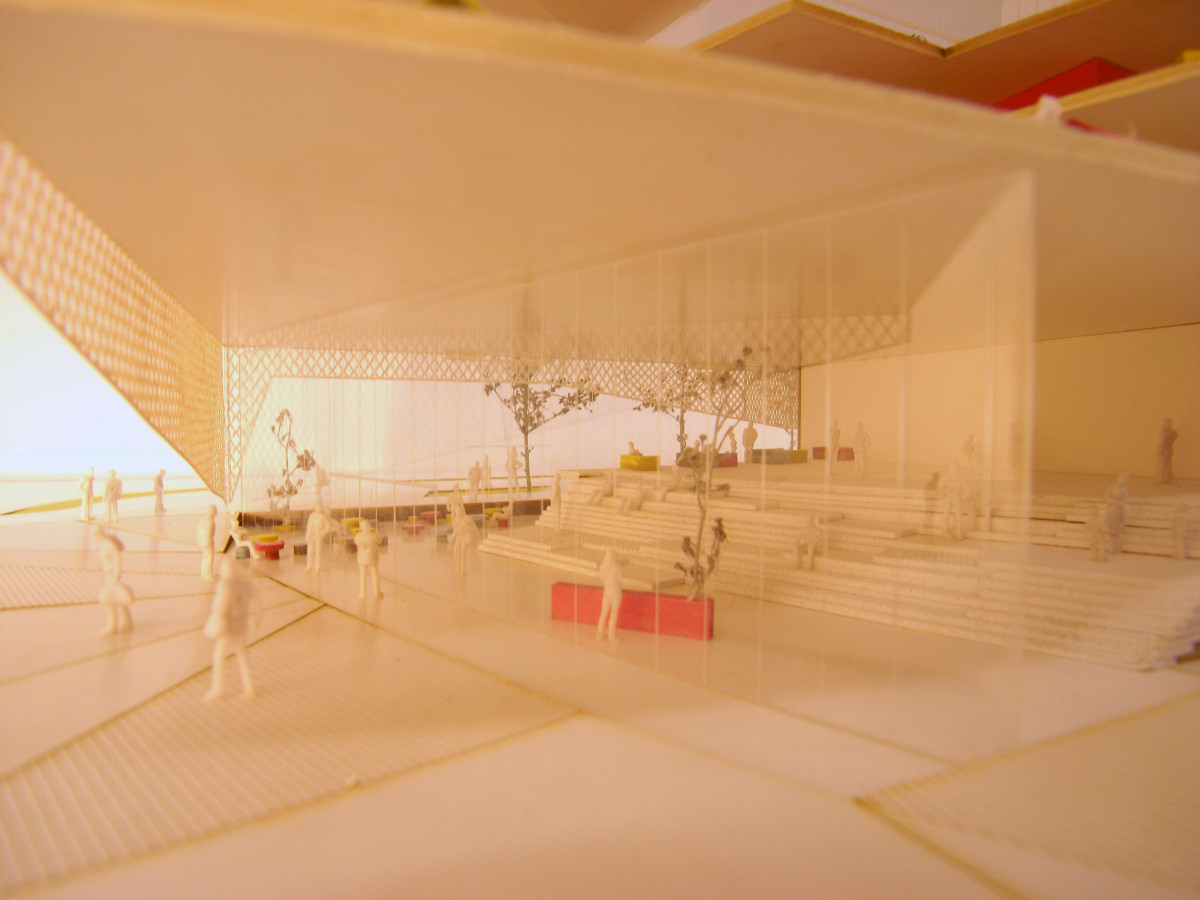
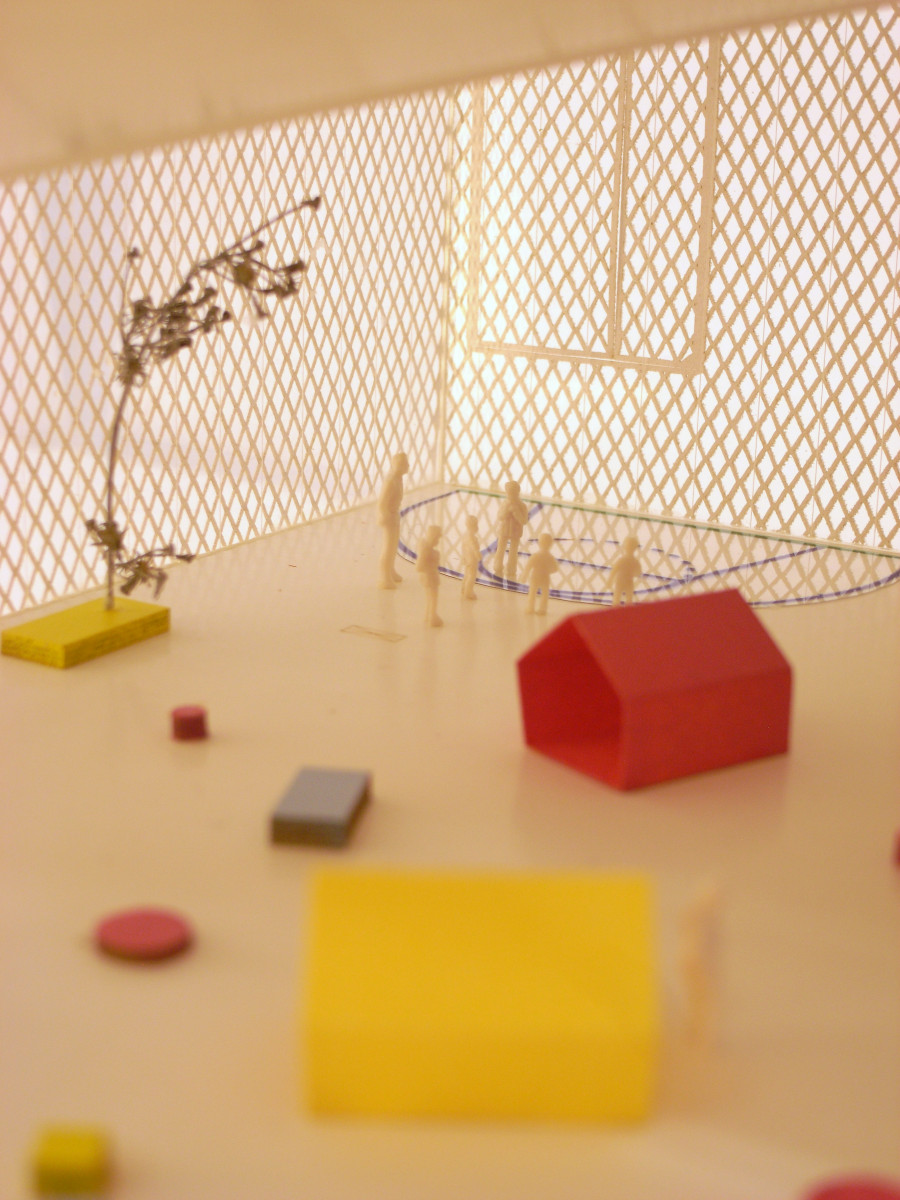
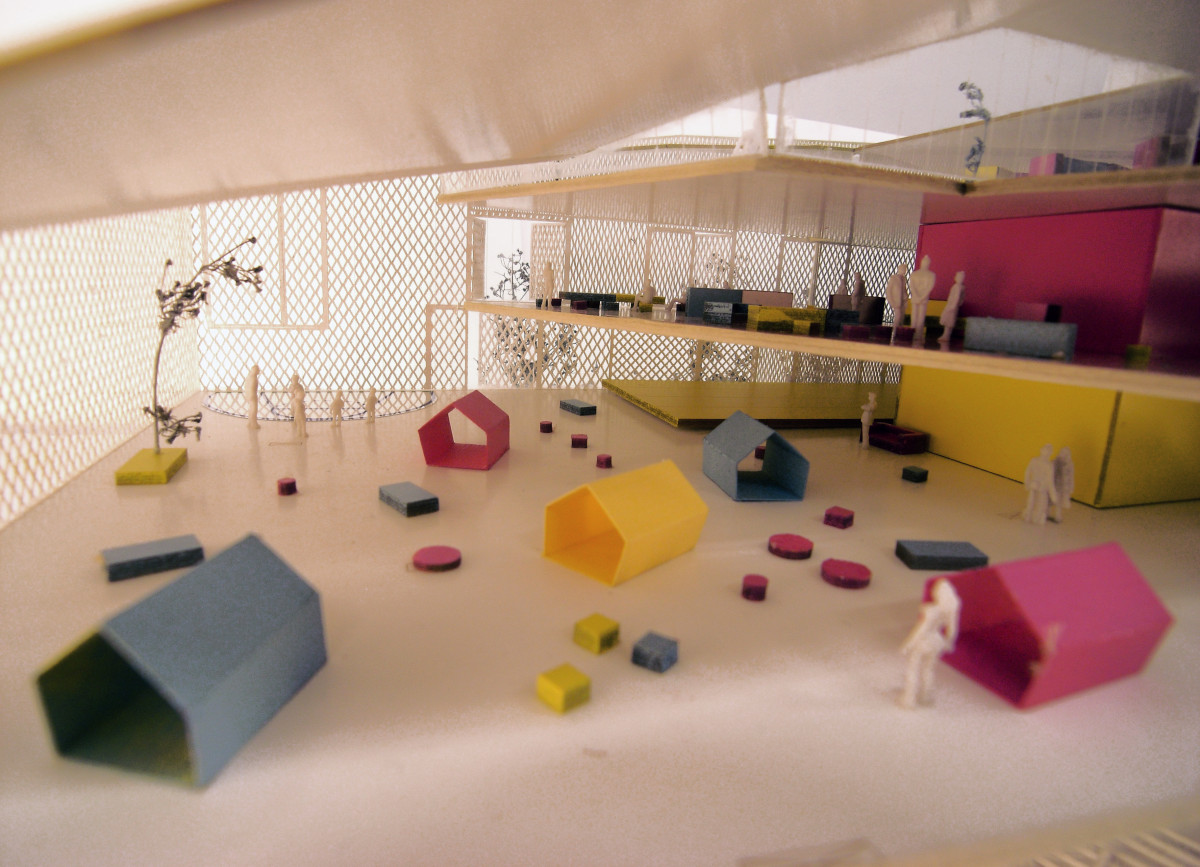
It is not a coincidence that in Polish nomenclature a word ‘HOME’ (DOM) is used to denote this kind of institution – it is not a CENTRE, an INSTITUTE, it is a HOME. Paradoxically enough, owing to communist time legacy, all these ‘homes’ are fairly institutionalized structures, which for some years now have been trying to redefine themselves. The methods are different, depending on local conditions, but there seems to be one common element: looking for new architectural qualities and new ways of appealing to local communities. The design presented here made use of the ‘HOME’ motif, the source of inspiration was a story based on curtains and shutters. The present Cultural Centre is determined by its locality, and is somehow predestined to have two different faces; one overlooking Rzymowskiego Street and the other facing the settlement. The first one is decidedly more restricted, closed, it should be provided with high quality accoustic isolation and at the same time it should give the city dwellers an opportunity of observing activities inside the Centre. Hence the idea of using overscaled shutters, filled with steel-wire mesh. The same kind of steel netting was used in more open elevation facing Orzycka Street in the form reminiscent of curtains, which are one of the highly recognizable symbols of domestic warmth.
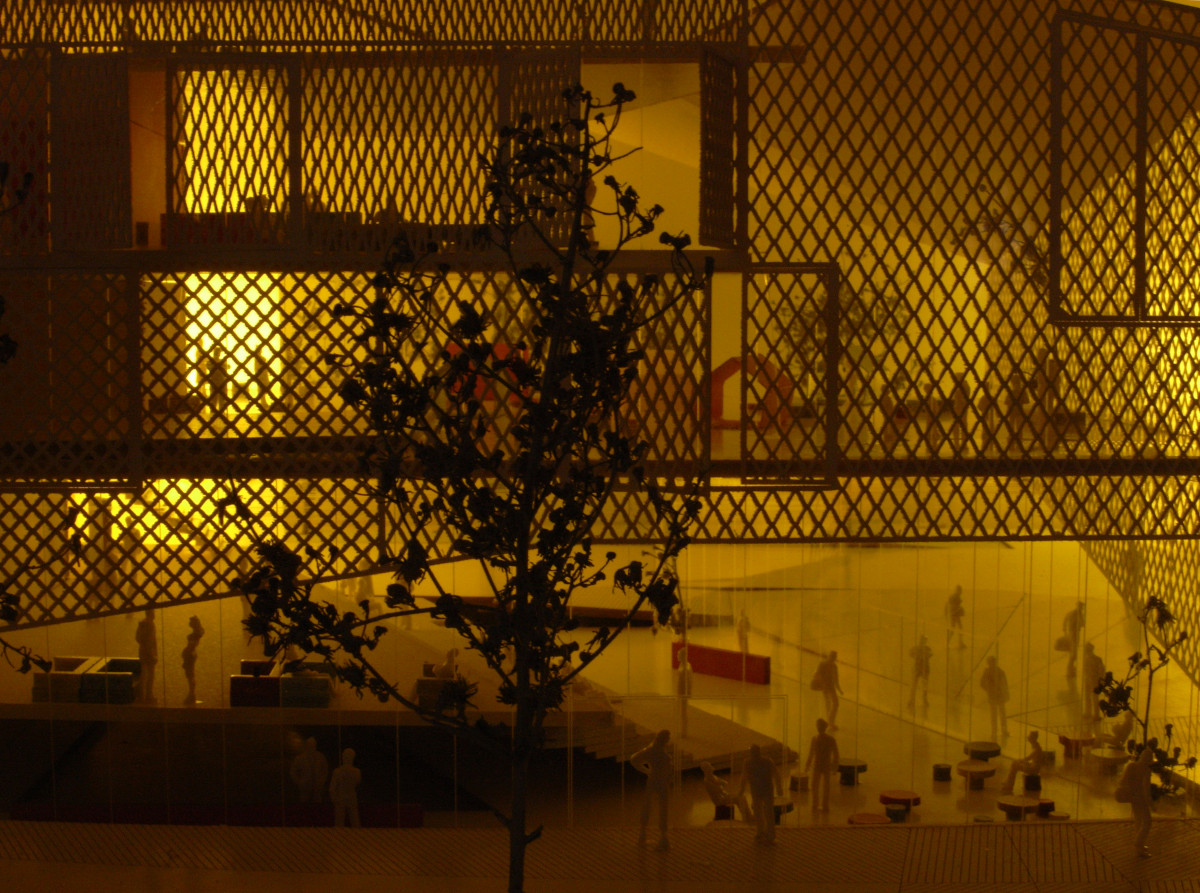
The steel-wire expanded mesh, allows for smooth regulation of a scale of its perforation by using a strictly mechanical procedure of stretching. Its subdued white colours create an esthetic framing for very colourful and activity-intensive interiors of the Cultural Centre, somehow visibile in the second background of the elevation. Such treatment of the elevation results from main functional assumptions of the design, and it gives the possibility of flexible shaping of interiors and controlling the degree of sunlight penetrating the building. Also, some amount of sincerity of the building structure and functions shown on the elevation has been preserved.

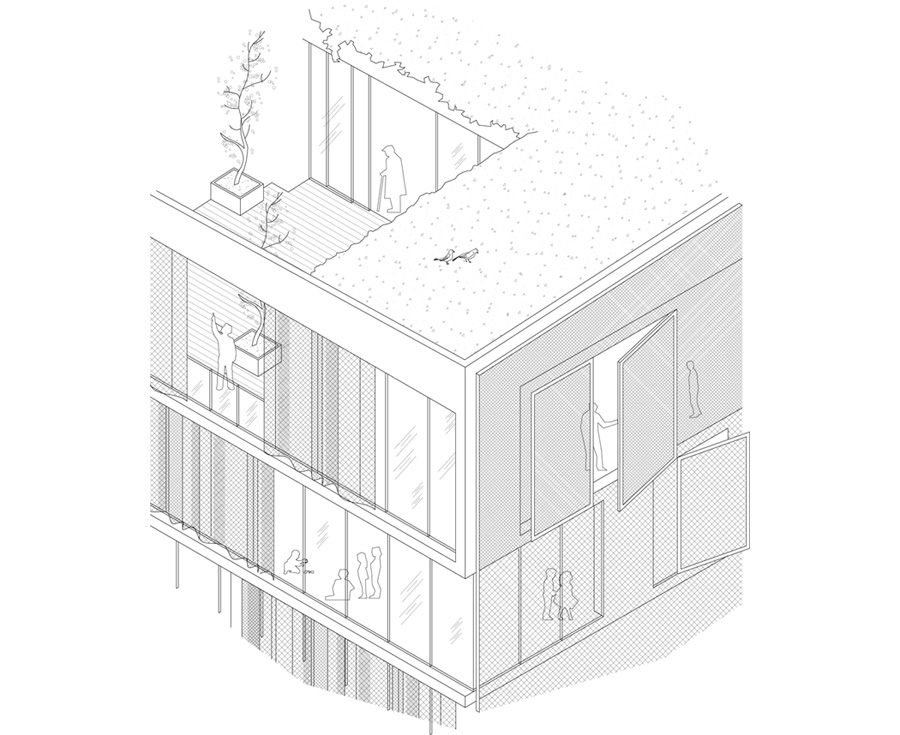

Practice shows that the drawing power of a cultural centre depends not so much on its location as on the attractiveness of a programme offered by it. Remembering that an interesting offer should be is at least partly created by its addressees, in answer to their needs, the present design recommends division and fragmentation of the original programme. The proposed system envisages combining all the rooms which have anyway been defined as common, open ones, into one big, truly flexible and integrating space. In place of a number of rooms, more or less frequently used, assigned to particular activities, we get one big space with an infinite number of possible arrangements, with full advantage being taken of its capacity. What is more, we do not create an object of a rigid system and layout which would determine programming of activities. An open form easily submits to inevitable changes in time, space and way of thinking about the function of the Cultural Centre.
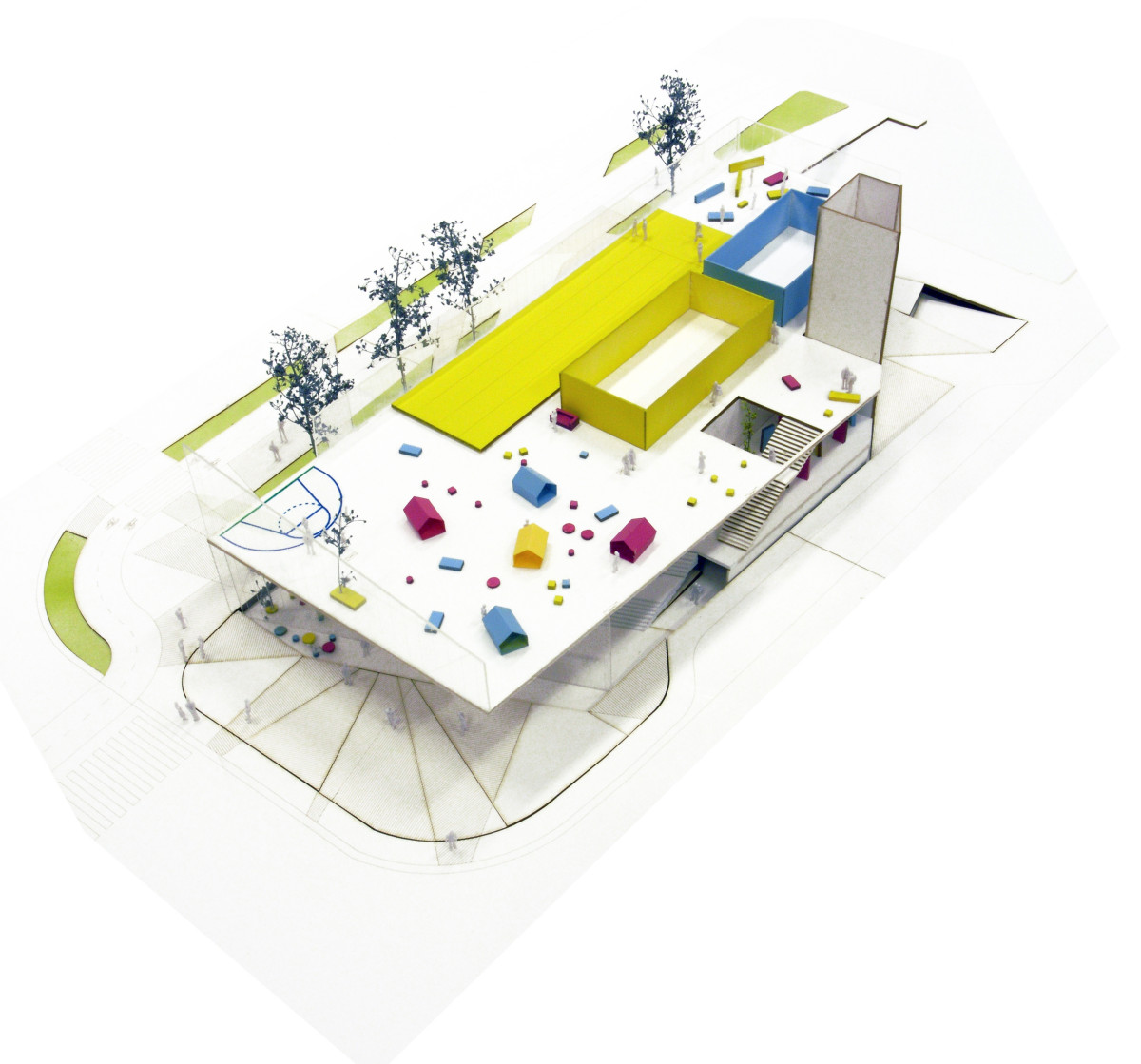
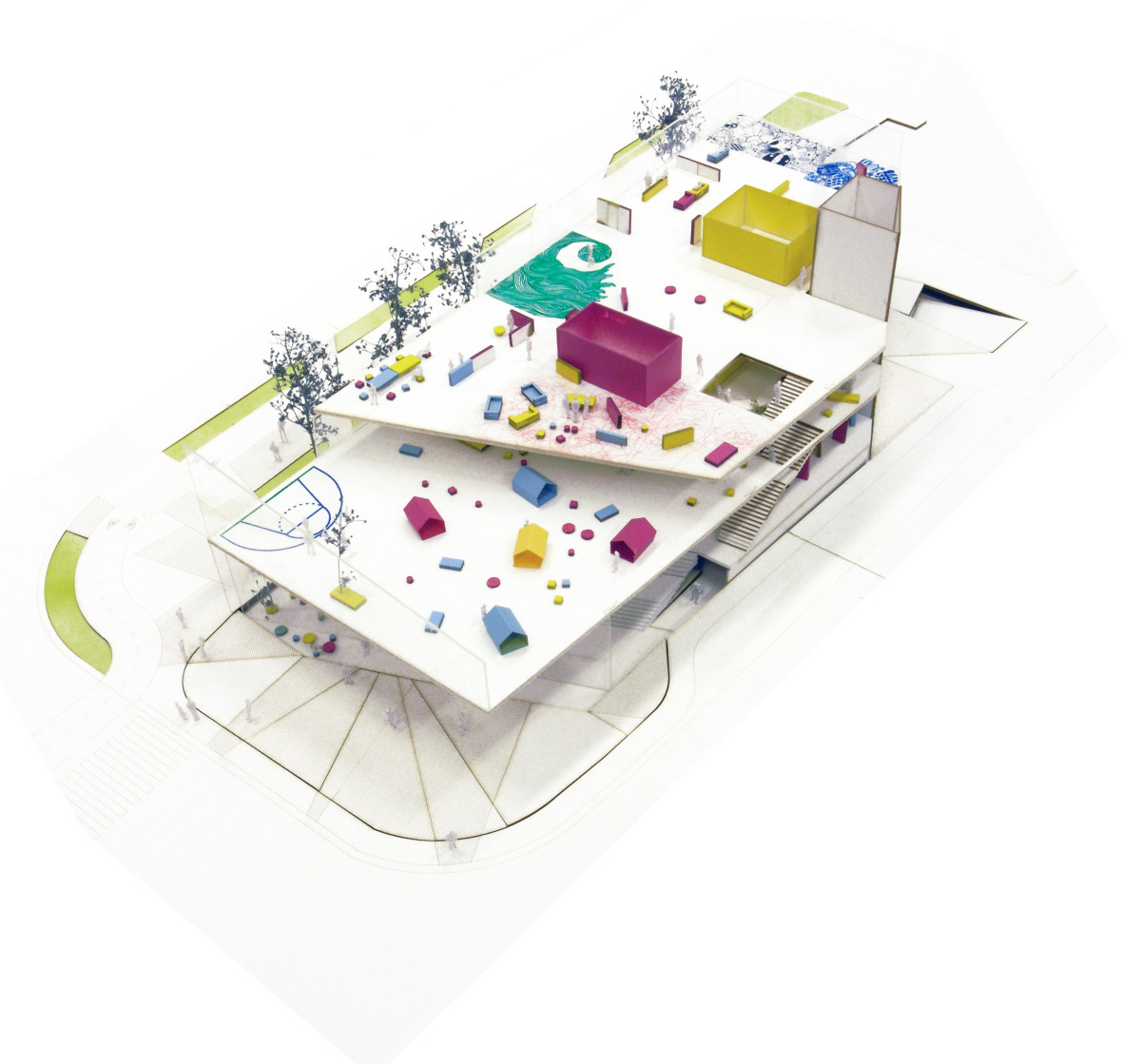
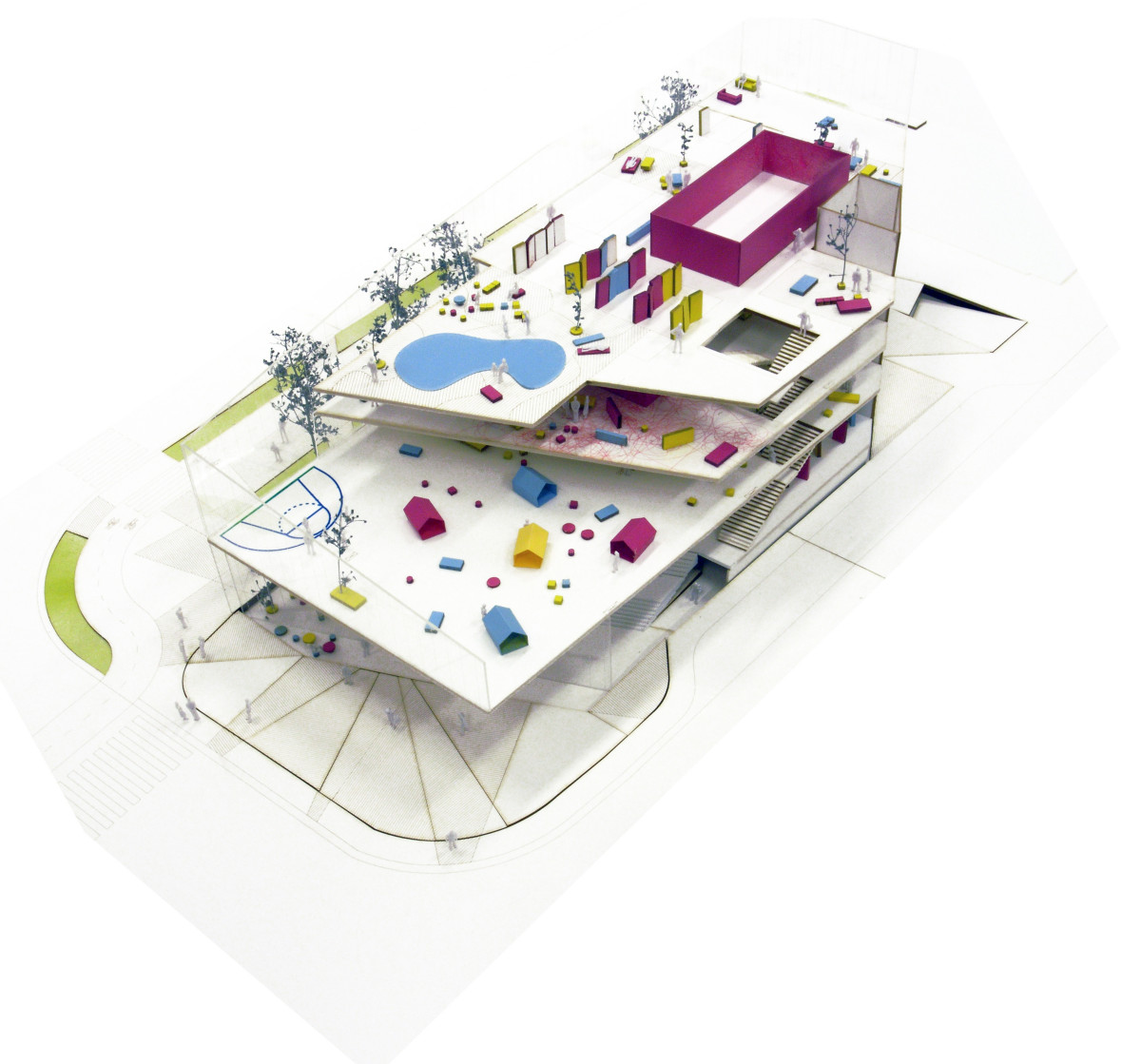
The present design distinguishes three main zones.
HALF-PUBLIC SPACE on the groundfloor level of the building is the continuation of the entrance square. On entering the building a visitor can see a two-storey hall, with an access to information, cloakroom, catering and sanitary facilities. A wooden, amphitheatrical staircase leads to the foyer of a theatre hall combined with the art gallery. All this zone is dedicated to communication and integration with the nearest surrounding of the Cultural Centre. The layout of the entrance square and the hall allows for creating an informal, open theatrical space.
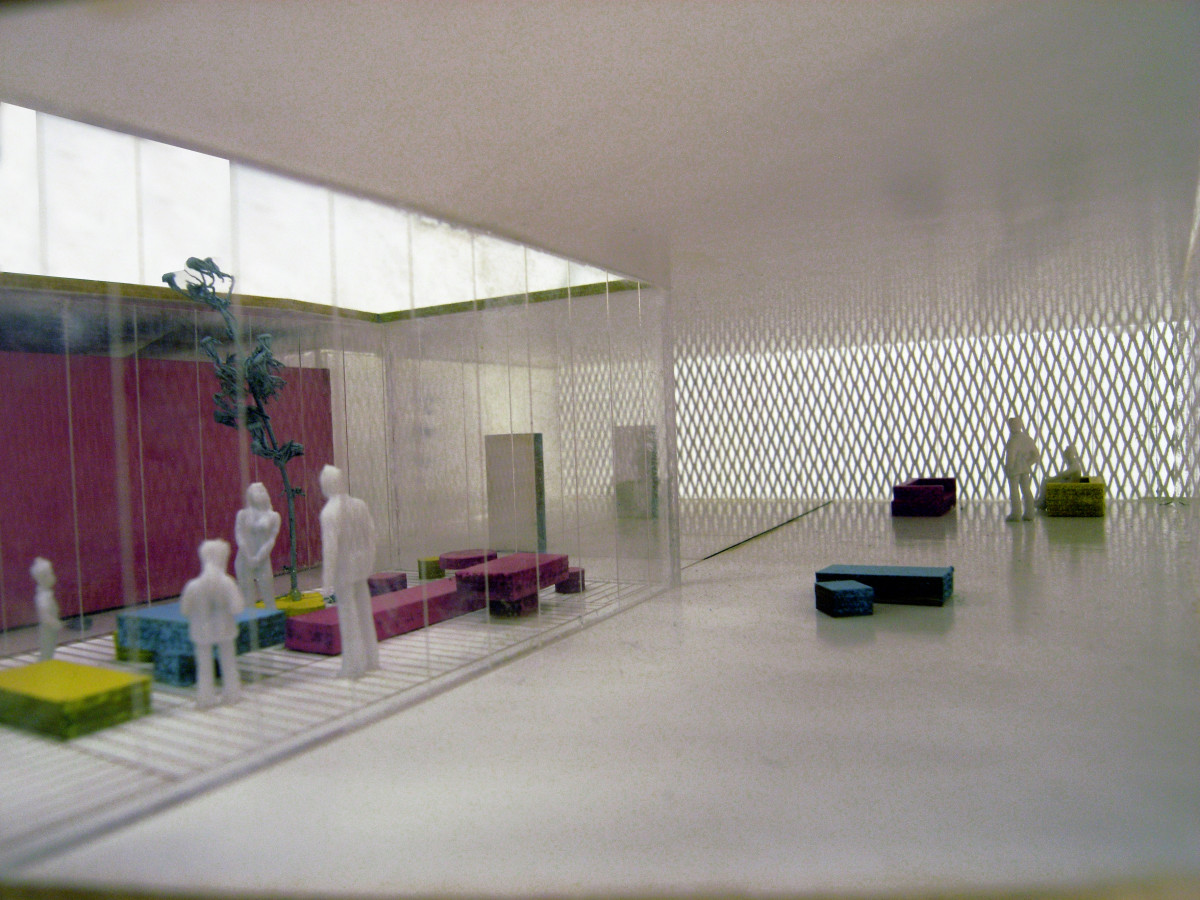
EXPRESSION SPACE occupies two next floors of the building. The lower one is dedicated to physical activities. A bigger space has been alloted to team-game, dancing, physical exercise rooms. It is largely a 2-storey space and there is a visual contact with a higher storey where plastic arts prevail. Here, all sorts of workshops, studios, ateliers and artistic clubs interpenetrate. The spatial organization on both floors is similar, with sanitary and technical facilities placed in a vertical block in the central part of a plan of the building.
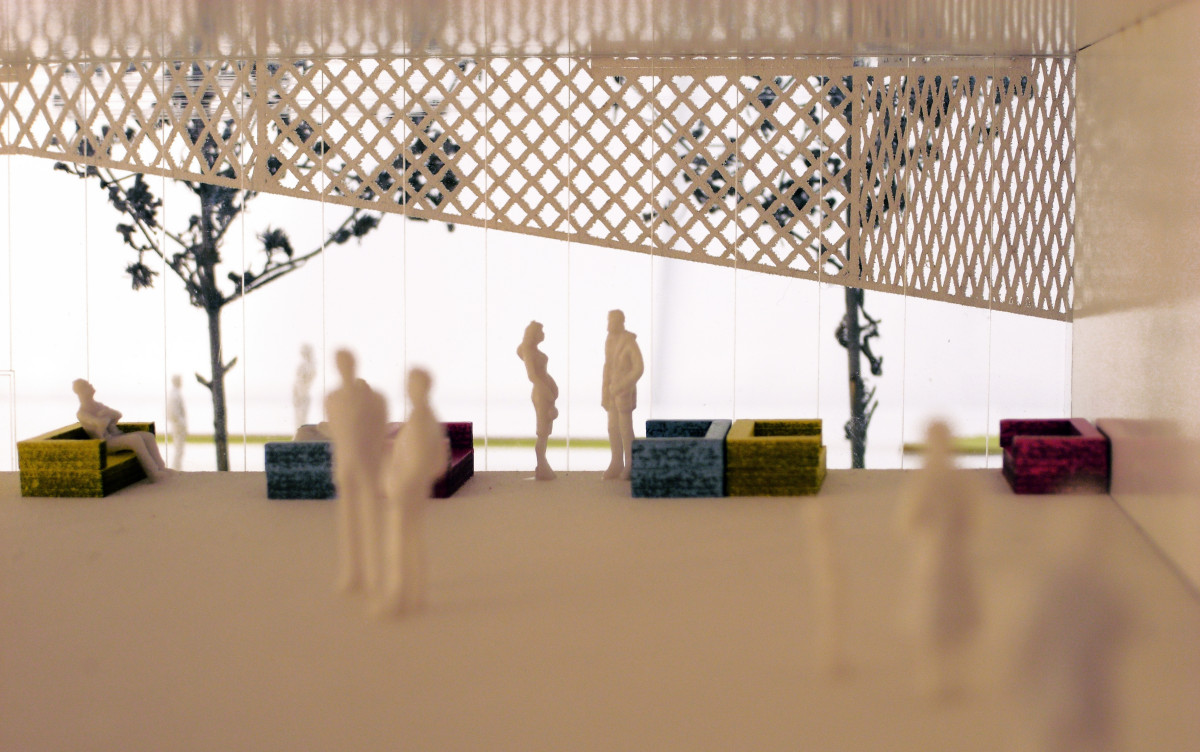
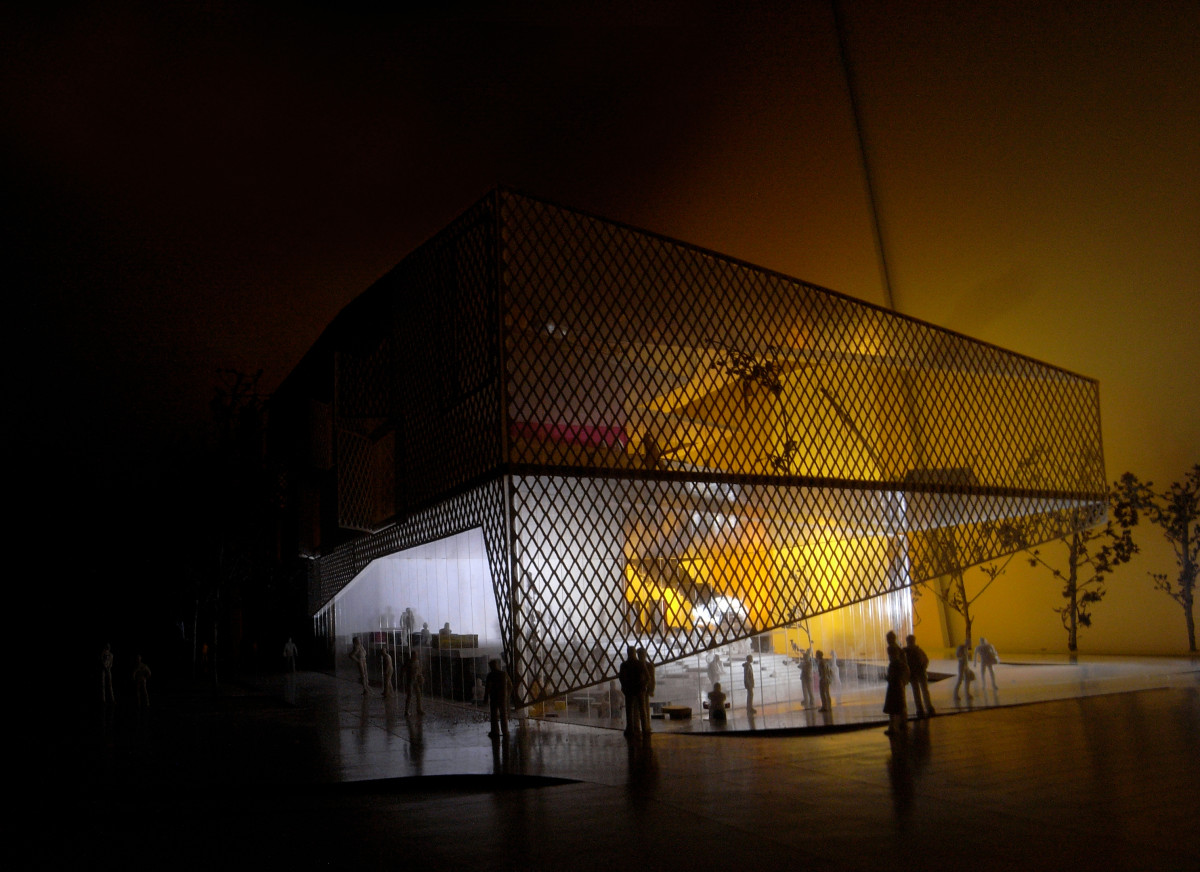
CONCENTRATION SPACE is situated on the last floor of the Cultural Centre. Contrary to EXPRESSION SPACE it is meant to be an introvertic space, closed to the outer world and its stimuli. The plan of the building shows some small, open patios. Each patio is of a different character defined by the function of a room that is additionally lit by a given patio. The rooms alloted for therapeutical meetings, foreign languages classes or music lessons, a club for seniors and any other functions requiring peace and concentration are located on this floor.
